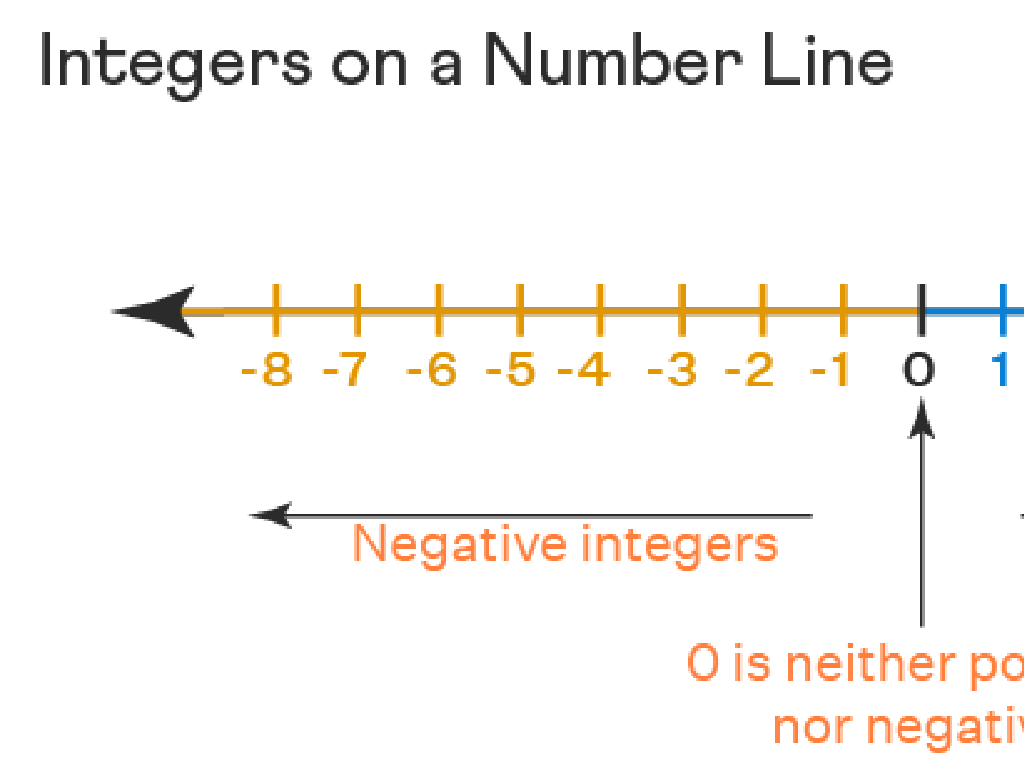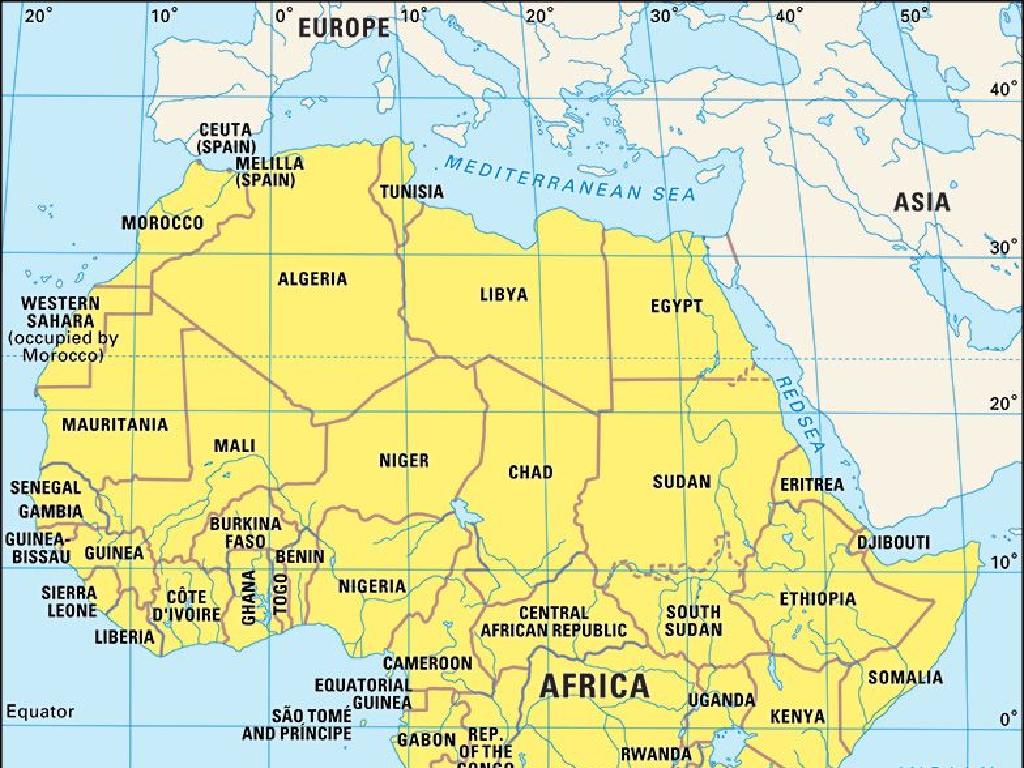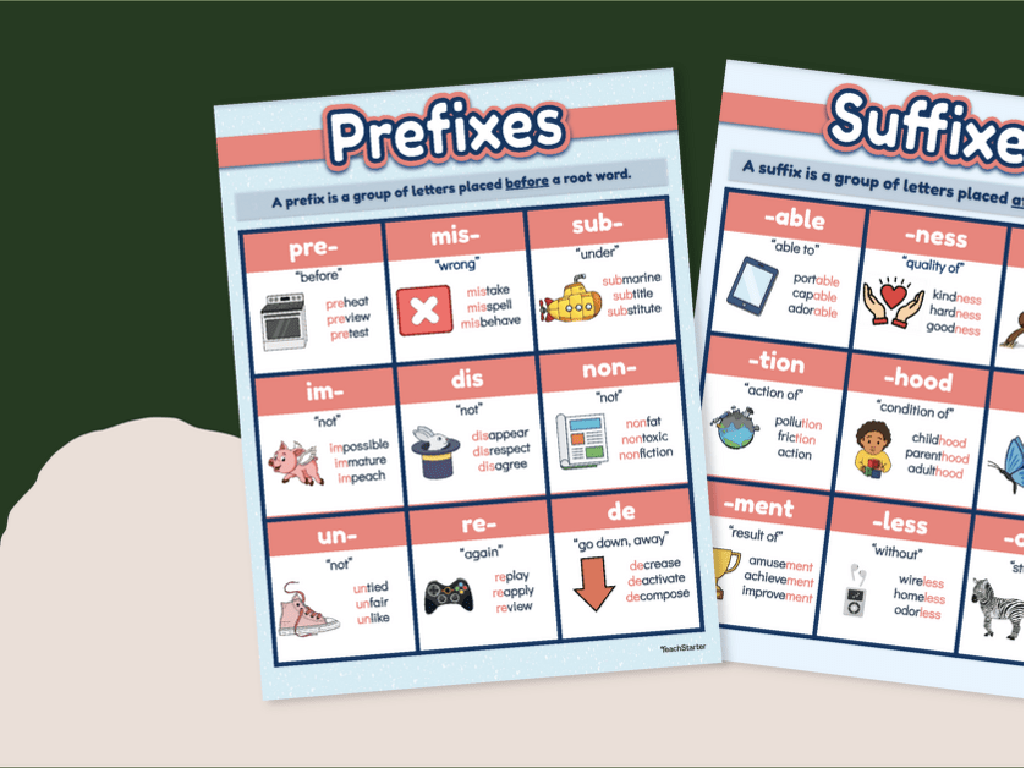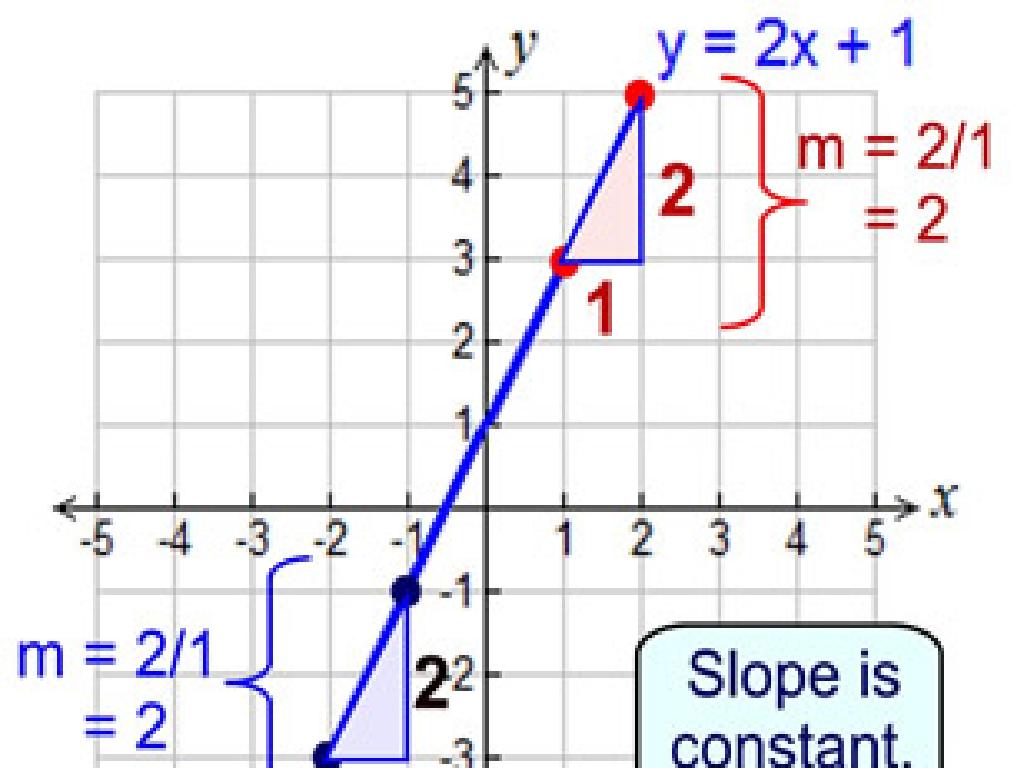Sort Elementary Substances And Compounds Using Chemical Formulas
Subject: Science
Grade: Fifth grade
Topic: Atoms And Molecules
Please LOG IN to download the presentation. Access is available to registered users only.
View More Content
Welcome to Atoms and Molecules!
– Atoms: Universe’s building blocks
– Atoms are tiny particles that make up all matter.
– Molecules: Groups of atoms bonded
– Molecules are made when atoms join together.
– Atoms make up everything around us
– Molecules form different substances
– Water (H2O) is a molecule made of 2 hydrogen atoms and 1 oxygen atom.
|
This slide introduces the fundamental concepts of atoms and molecules to fifth-grade students. Begin by explaining that atoms are the smallest units of matter, the tiny building blocks that make up everything in the universe. Then, describe molecules as groups of atoms that are bonded together, which can consist of the same or different types of atoms. Use simple, relatable examples like water (H2O) to illustrate how different atoms combine to form molecules. Emphasize that understanding these basics is key to learning about the composition of substances and the world around us. Encourage students to think of substances they interact with daily and consider what atoms and molecules they might be made of.
Atoms: The Building Blocks of Matter
– What is an atom?
– Smallest unit of matter, makes up everything.
– Discovering parts of an atom
– Atoms consist of protons (+), neutrons (0), and electrons (-).
– Examples of atoms
– Hydrogen (H), Oxygen (O), Carbon (C) are different types of atoms.
|
This slide introduces the concept of atoms as the fundamental units of matter. Begin by defining an atom and explaining that everything around us is made up of atoms. Then, describe the three main parts of an atom: protons with a positive charge, neutrons with no charge, and electrons with a negative charge. Use simple diagrams to illustrate the structure of an atom. Provide examples of different atoms, such as hydrogen, oxygen, and carbon, and mention that each has its own unique number of protons, neutrons, and electrons. This will set the foundation for understanding how these atoms combine to form molecules and compounds.
Molecules: When Atoms Join Together
– What is a molecule?
– A molecule is two or more atoms bonded together, like H2O for water.
– Atoms bonding into molecules
– Atoms share or exchange electrons to stick together.
– Simple molecule examples
– O2 (oxygen) and H2 (hydrogen) are simple molecules kids breathe and drink.
– Exploring molecule formation
|
This slide introduces the concept of molecules to students by defining what a molecule is and explaining how atoms bond to form molecules. Start with familiar substances like water (H2O) to illustrate the idea of atoms joining. Explain that molecules are the smallest unit of a compound that still has the properties of that compound. Discuss how atoms can share electrons (covalent bond) or transfer them (ionic bond) to form stable molecules. Show examples of simple molecules such as oxygen (O2) and hydrogen (H2), which are essential for life. Use diagrams to visualize the bonding process. Encourage students to think of other examples of molecules they encounter in everyday life.
Exploring Elementary Substances
– What are elementary substances?
– Substances made of only one kind of atom, like oxygen (O2) or gold (Au).
– Examples of elementary substances
– Oxygen (O2), Gold (Au), Hydrogen (H2) are some simple examples.
– Decoding chemical formulas
– Chemical formulas tell us the atoms in a substance. O2 has 2 oxygen atoms.
– Practice sorting substances
– We’ll sort different substances by their chemical formulas in class.
|
This slide introduces elementary substances, which are pure chemical substances made of a single type of atom. Use relatable examples like oxygen, which they breathe, and gold, which is in jewelry, to help them understand. Explain how chemical formulas represent the atoms in these substances, using oxygen’s O2 as an example to show it’s made of two oxygen atoms. In class, engage students with an activity to sort various substances based on their chemical formulas, reinforcing their understanding of elementary substances and how to identify them.
Compounds and Their Formulas
– Understanding Compounds
– Compounds are made of two or more elements combined.
– Compounds vs. Elementary Substances
– Elementary substances are pure elements, compounds are not.
– Deciphering Chemical Formulas
– Formulas show elements and the number of atoms, like H2O for water.
– Practice with Real Examples
– Let’s look at table salt (NaCl) and water (H2O).
|
This slide introduces the concept of compounds and how they are represented through chemical formulas. Start by explaining that compounds are substances formed when two or more elements are chemically bonded together. Contrast this with elementary substances, which consist of only one type of atom. Teach students how to read chemical formulas, where the letters represent the elements and the numbers indicate how many atoms of each element are present. Use familiar examples like water (H2O) and table salt (NaCl) to illustrate the concept. Encourage students to practice by writing formulas for other common compounds they may know.
Sorting Substances: Elements vs. Compounds
– Criteria for sorting substances
– Look at the number of types of atoms
– Activity: Elements or Compounds?
– Sort samples into ‘element’ or ‘compound’ groups
– Role of chemical formulas
– Chemical formulas tell us the atoms in a substance
– Significance in science
|
This slide introduces the criteria for sorting substances into elements and compounds, which is foundational for understanding chemical makeup. The activity involves students sorting various examples into either elements or compounds, reinforcing the concept that elements consist of one type of atom, while compounds are made of two or more. Emphasize the importance of chemical formulas, as they are like recipes telling us exactly which atoms and how many of each make up a substance. Understanding this is crucial for students as it lays the groundwork for future topics in chemistry. For the activity, provide samples like H2O, CO2 for compounds, and O2, N2 for elements. Encourage students to look at the subscripts in the formulas to determine the number of atoms present.
Chemical Formulas in Action
– Chemical formulas as identifiers
– H2O for water, CO2 for carbon dioxide
– Chemical formulas in science
– They show elements in a substance and their ratios
– Real-life formula examples
– Water (H2O), Table salt (NaCl), Carbon dioxide (CO2)
– Practice sorting substances
|
This slide introduces students to the concept of chemical formulas and their importance in science. Chemical formulas are like recipes that tell us what and how much of each element is in a substance. They help scientists and students to identify and understand the composition of different substances. Real-life examples, such as water (H2O), table salt (NaCl), and carbon dioxide (CO2), illustrate the practical application of chemical formulas. Encourage students to practice sorting substances by their chemical formulas to reinforce their understanding. This activity will help them recognize common substances and their corresponding chemical formulas, laying the foundation for more advanced chemistry concepts.
Class Activity: Formula Scavenger Hunt
– Understand scavenger hunt rules
– Find items with chemical formulas
– Items like water (H2O), salt (NaCl), and sugar (C12H22O11)
– Discuss items and their formulas
– Why does salt have the formula NaCl? Discuss in groups
– Learn chemical symbols and compounds
– Recognize elements like Hydrogen (H), Oxygen (O), Sodium (Na), and Chlorine (Cl)
|
This activity is designed to help students apply their knowledge of chemical formulas in a fun and interactive way. Divide the class into small groups and provide instructions for the scavenger hunt, explaining that they need to find items around the classroom that have chemical formulas. Examples include water bottles, salt packets, or sugar sachets. After the hunt, facilitate a group discussion where students share their findings and discuss the chemical formulas of the items. This will help them understand how chemical symbols represent elements and how these elements combine to form compounds. Provide guidance on how to identify and write chemical formulas. The activity will reinforce their understanding of elementary substances and compounds.
Conclusion: Atoms, Molecules & Chemical Formulas
– Recap of key concepts
– Atoms are building blocks, molecules are two or more atoms, and chemical formulas show atom types in compounds.
– Significance of learning this
– Knowing about atoms and molecules helps us understand the world around us and the substances we use.
– What’s next in our journey
– We’ll dive into chemical reactions and see how substances change.
– Keep exploring at home!
|
As we wrap up today’s lesson, it’s important to review the key concepts we’ve learned about atoms, molecules, and chemical formulas. Understanding these basics is crucial because they are the foundation of everything in the physical world, from the air we breathe to the materials we use daily. Next time, we’ll explore chemical reactions, which will show us how different substances interact and transform. Encourage students to observe the world around them and think about the tiny particles that make up everything they see and touch. This will prepare them for our next exciting topic and help reinforce today’s lesson.





